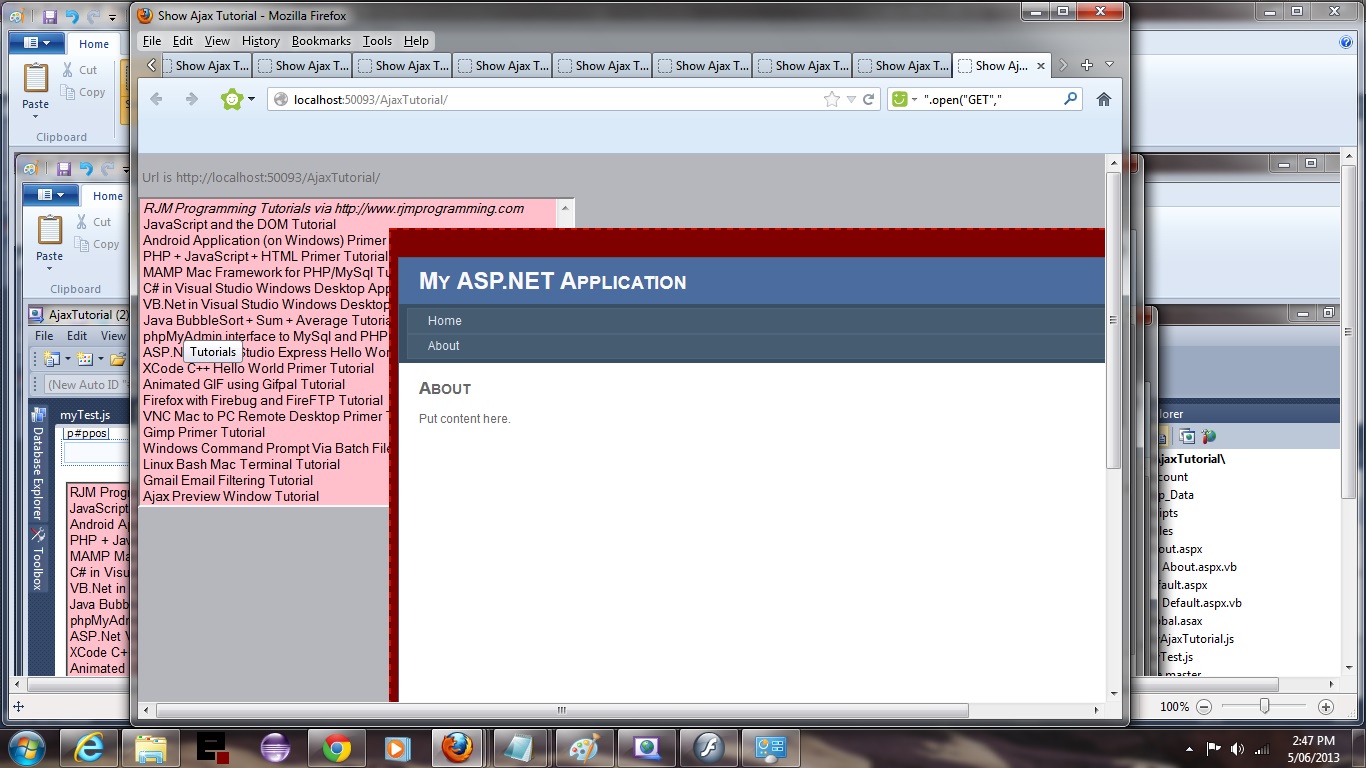Ajax is a client-side meets server-side melding of ASP.Net (or PHP) and Javascript and HTML and CSS and allows you to stay on the web page you are on doing many more things, rather than constantly changing web pages the way that HTML form tag makes you do. Ajax works with XMLHttpRequest object to quiz the server-side while staying on the client side. You may have guessed that we have been working up to this, and I refer you to the previous tutorial about Ajax Preview Window Tutorial, JavaScript and the DOM Tutorial and PHP + JavaScript + HTML Primer Tutorial for important information to learn before tackling Ajax. Ajax shares similar restrictions to iFrames in limiting you to work within your own domain, generally speaking. Ajax normally makes use of the onmouseover (hence the amateurish added rendition of a cursor, where I was hovering over the option tag, but couldn’t take a snapshot of this … ie. too lazy to get the camera!) and onmouseout events of HTML elements and you may notice the less than ideal Internet Explorer behaviour for this Ajax code, and that is because for Internet Explorer the option tag has no onmouseover nor onmouseout event defined, so we did an awful kludge.
Would love to show you the Ajax effect in ASP.Net in a live sense (like we do for PHP), but that would mean using live IIS/ASP.Net web hosting, and my live hosting is Apache/PHP so to see this in a live sense use the downloads and construct it yourself or view the last frames of the tutorial. This same issue is the reason for the lame hover content, which is just the About Us page with dynamic background colour and positioning, but this goes back to that Ajax rule of only having hover content within the realms of your home page’s domain.
Link to some downloadable ASP.Net code … rename to Default.aspx.
Link to some downloadable Javascript (ASP.Net style) code … rename to myTest.js.
Regarding this topic I really like “ASP.NET 3.5” by Stephen Waither
Earlier tutorials …
JavaScript is a tremendous web client-side language to learn. You may have heard of a server-side JavaScript, but this tutorial only deals with client-side work. This tutorial builds a JavaScript layer on top of the PHP tutorial made earlier, showing how the DOM can be used to change the look of your webpage dynamically, even if most of it is in an iFrame (but there are limits).
PHP is a wonderful language to learn. It is usually associated with being a web server-side language (as with this tutorial, where it is being shown on a local MAMP web server) but can be a command line tool as well. If you like PHP you may eventually like ASP.Net and/or Python, and vice versa. It has sophisticated data structures, Object Oriented (the thinking that you can build classes with data and methods which define objects created as you run the program … eg. you might write a class for book and have data members for things like numPages and publisher, author, creationDate and have methods called things like getCreationDate, setCreationDate, getAuthor, setAuthor allowing the user to use these methods rather than changing the data members themselves … heaven forbid that!) code concepts, and really combines well with JavaScript (as a client-side language).
Regarding this topic I really like “JavaScript & Ajax” seventh edition by Tom Negrino and Dori Smith
Did you know …
JavaScript makes a great easy-access Calculator?
Try typing the lines below into the address bar of your favourite browser:
Javascript: eval(512 / 380);
Javascript: eval(512 * 380);
Javascript: eval(512 – 380);
Javascript: eval(512 + 380);
Javascript: eval(512 % 380);
These days we spend so much time on the Internet it is a much quicker way to get to a calculator!
If this was interesting you may be interested in this too.



